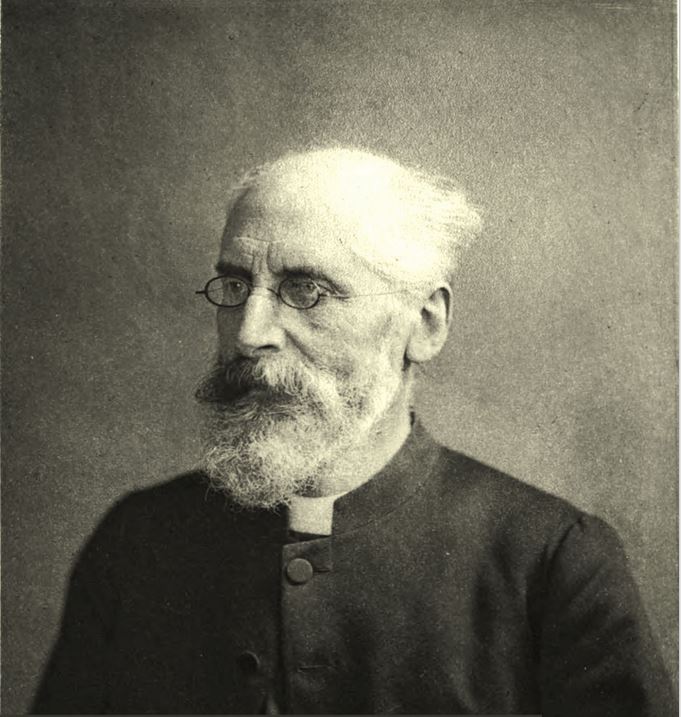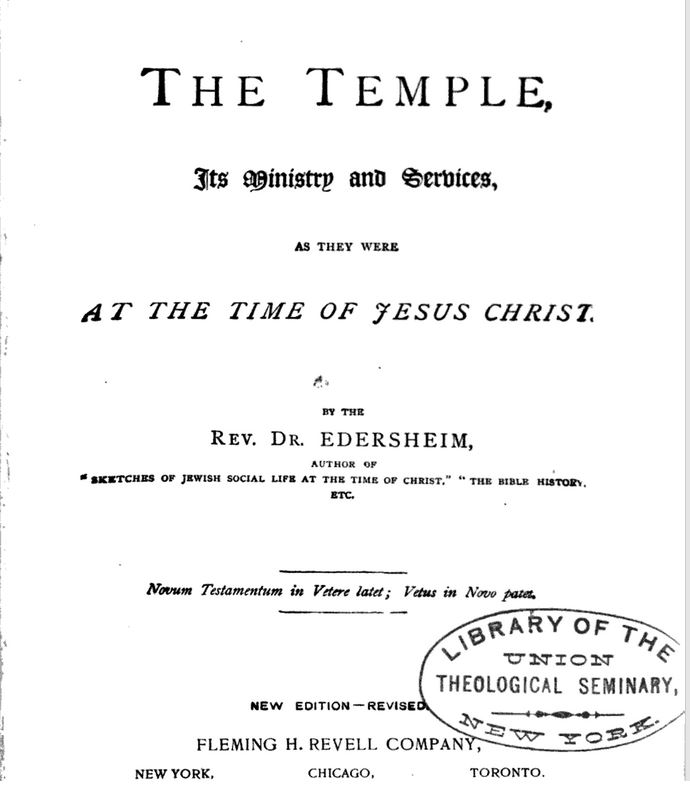The Temple: Its Ministry and Services
The Temple: Its Ministry and Services
by Alfred Edersheim (1825-1889)
Edersheim was born in Vienna of Jewish parents of culture and wealth. English was spoken in their home, and he became fluent at an early age. He was educated at a local gymnasium and also in the Talmud and the Torah at a Hebrew school. He emigrated to Hungary and taught languages, before converting to Christianity.
Putting this book into an audio recording has been difficult book I’ve done. There were numerous errors when the physical book was put into an electronic digital format. Likewise I readily confess my own difficulty in the pronunciation of many names and places. The hearer will please pardon such errors. In addition, Edersheim’s writing style is unique.
Please read the note at the bottom of this page. It is most important. MLM
00 Title, Author and Preface
01 Chapter 1 – A View of Jerusalem and the Temple
02 Chapter 2 – Within the Holy Place
03 Chapter 3 – Temple Order, Revenues, Music
04 Chapter 4 – The Officiating Priesthood
05 Chapter 5 – Sacrifices – Their Order and Meaning
06 Chapter 6 – Burnt-Sin-Trespass, Peace Offerings
07 Chapter 7 – At Night in the Temple
08 Chapter 8 – The Morning and the Evening Sacrifice
09 Chapter 9 – Sabbath in the Temple
10 Chapter 10 – Festive Cycles and Arrangement of the Calendar
11 Chapter 11 – The Passover
12 Chapter 12 – The Paschal Feast and the Lord’s Supper
13 Chapter 13 – The Feast of Unleavened Bread and the Day of Pentecost
14 Chapter 14 – The Feast of Tabernacles
15 Chapter 15 – New Moons – Feast of 7th New Moon, Trumpets, New Years Day
16 Chapter 16 – The Day of Atonement
17 Chapter 17 – Post-Mosaic Festivals – Fasting
18 Chapter 18 – On Purifications
19 Chapter 19 – On Vows
Caution to the listener regarding what Edersheim wrote on page 134:
“And then it was, after the regular Paschal meal, that the Lord instituted His own Supper, for the first time using the Aphikomen ‘when He had given thanks’ (after meat), to symbolise His body, and the third cup, or ‘cup of blessing which we bless’ (1 Cor 10:16) — being ‘the cup after supper’ (Luke 22:20) — to symbolise His blood.”
————
This seems so inconsistent for him. In both of his works (Temple and Jesus the Messiah) he has emphasized over and over how the Old Testament services, ministry and sacrifices were prophetic and typological, and always pointing ahead to the Messiah’s person and work. They were but a foreshadow of things to come, which is Christ, the substance of what and who was promised. I mean, ponder the Lamb at the Lord’s Passover. The faithful were commanded to eat of it. They ate the actual lamb. And now in the days of the New Testament, Edersheim imagines a symbolical partaking of the Lord’s Body and Blood in the Supper. Behold the Lamb of God Who takes away the sin of the world (John 1:29). Matthew 26:26-28 26And as they were eating, Jesus took bread, and blessed it, and brake it, and gave it to the disciples, and said, “Take, eat; this is My Body. And He took the cup, and gave thanks, and gave it to them, saying, “Drink ye all of it; for this is My Blood of the new Testament, which is shed for many for the remission of sins (Matthew 26:26-28).



No comments yet
Comments are closed